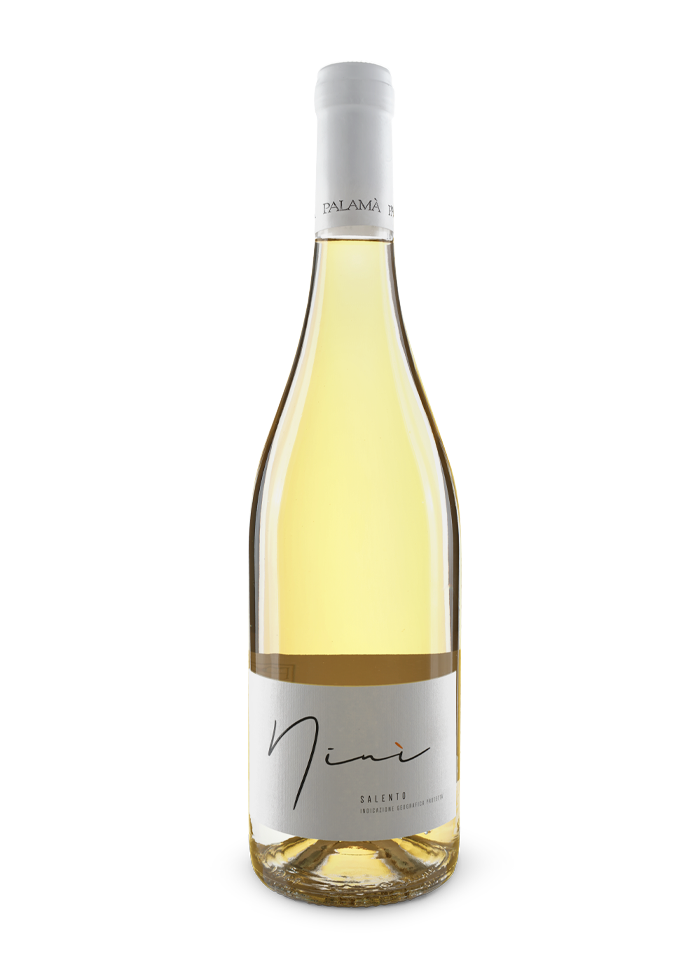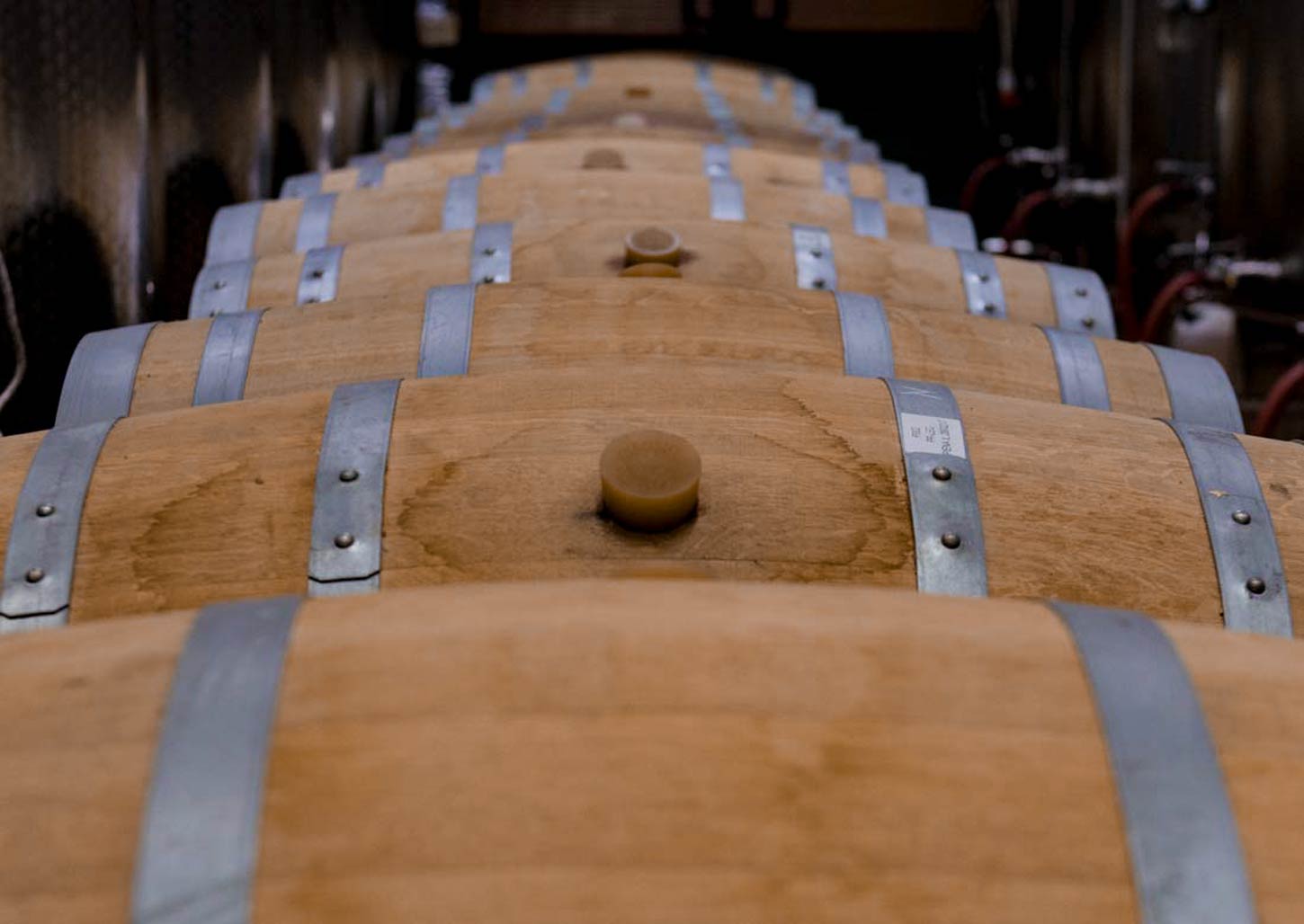White Ninì Palamà
A pproximately 50% of Verdeca ferments in wood, the remaining part in steel. Both carry out malolactic fermentation. A very particular wine, fruity, spicy, soft. A new way to express the Verdeca for Michele’s first wine, a tribute to his father Ninì.
Grape variety
Verdeca
Bottle: 70 GL Glass Collection
Cap: 51 FOR (cork) Undifferentiated collection
Capsule: C/90 ALU Aluminum Collection
The labels affixed to the front and back of bottles are not subject to separate disposal from the glass bottle.
For proper recycling, follow the guidelines provided by your Municipality.



Characteristics and Curiosities
by Fabio Scarpitti, Italian Sommelier Champion
The whole “Ninì” wine line has been created and vinified by Michele, Ninì Palamà’s son; a young man with an incredible passion, desire to do and impressive oenological knowledge. Basically, Michele inaugurated a new way of drinking Salento’s wines, breaking the mold of the tradition and giving it a more international character, without ever distorting or changing the traditional vines (therefore, no trace of Chardonnay or Cabernet, but solely and exclusively Verdeca, Primitivo, Negroamaro…). As will be seen, the result comes from the disruption of the thinning and vinification techniques. In particular, as regards the Verdeca, it is an autochthon wine whose name recalls the green color of its grapes; some might associate it with the Portuguese “Alvarinho”, harvested in the so called “vinho verde” area. However, it is much more likely that it comes from Greece, such as the Albarino is harvested in Galicia. The fermentation takes place in stainless steel, after removal of pomace, at a controlled temperature (10°C). Selected yeasts guarantee the extraction of as much fruity esters and typical Verdeca varietals as possible.
The best comes at the final stage of fermentation, when the wine reaches a certain alcoholic strength (10%vol.) and is moved to the barriques, where it acclimates due to an increase in temperature and where- thanks to lactic acid bacteria and saccharomyces-, after the end of the fermentation, the malo-lactic process begins (it transforms the unripe malic acid in lactic acid-which is less aggressive); making the wine more velvety and round. This type of fermentation takes place thanks to some bacteria known as Oenococcusoeni, that better work between 20°C and 22°C. In white wines, the malo-lactic fermentation decreases the odors produced by the esters, therefore, the fruity aroma; encouraging the formation of volatile phenols - basically aromas that include vanilla spices, smoked ones and buttery notes caused by diacetyl (formed by the degradation of citric acid).
Furthermore, the malo-lactic process creates aromatic precursors such as terpenes and beta-damascenone, which enrich it with floral sensations, aromatic herbs and exotic yellow fruits during this step of its evolution.
The Ninì stays in the barriques for 60 days and in order to not to contaminate its taste and smell, it doesn’t undergo any bâttonage (re-blending with noble lees) before proceeding with bottling. The barriques in question are made of American Oak, slightly toasted and porous.
As regards the tasting, a metaphor comes in handy: Michele’s Verdeca can be compared to an extra-large piece of clothing; it “runs large”. It is an overflowing, intense, exaggerated wine which almost stuns whoever drinks it.
On the nose, the White Ninì express fruity notes such as fresh pineapple, banana, green lemon, lime and Williams pear; but also flowery aromas of lemongrass, calicantus and citrus white flowers. Intense sensations of butter and vanilla- brought by the wood in which it ages-also join the ensemble.
On the palate it is dry, balanced, with a pleasant fresh and supple finish stemmed by a great alcoholicity. The persistence is great and long enough to provide tropical exotic fruit sensations and a faint hint of coconut milk. Some savory notes stem the fruity exuberance. Definitively a great wine that constitutes a new way of approaching Verdeca and which draws its fruity and supper notes from its own distinctive character. Most of all, a great start for a young and promising enologist.
Text by Fabio Scarpitti for Scarpitti Distribuzione snc ©
Combinations
Allow yourself to take a trip in Sao Tomé and Principe, off the west coast of Africa, in the Atlantic Ocean. In one of the many restaurants of the island, you will have the opportunity to taste a local delicacy: Octopus and Shrimps Salad, served on fried plantain and topped with coconut milk, jacca cut in cubes, salt and pepper. The octopus as well as the shrimps is cooked in a pan or on plate, with no trace of fat. On the island, you will not be able to find the Ninì White wine, therefore take on board at least a case of Ninì wine before sailing.
Text by Fabio Scarpitti for Scarpitti Distribuzione snc ©


